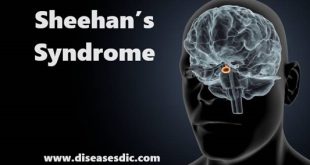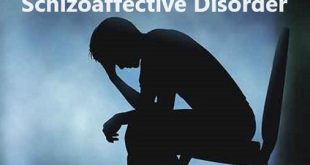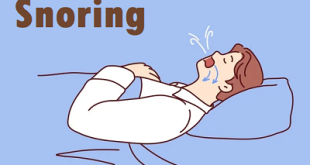Definition
Social anxiety disorder, formerly referred to as social phobia, is an anxiety disorder characterized by overwhelming anxiety and excessive self-consciousness in everyday social situations. People with social anxiety disorder have a persistent, intense, and chronic fear of being watched and judged by others and of being embarrassed or humiliated by their own actions. Their fear may be so severe that it interferes with work, school, or other activities. While many people with this disorder recognize that their fear of being around people may be excessive or unreasonable, they are unable to overcome it. They often worry for days or weeks in advance of a dreaded situation. In addition, they often experience low self-esteem and depression.
Social anxiety disorder can be limited to only one type of situation such as a fear of public speaking or a person can experience symptoms whenever they are around other people. If left untreated, social phobia can have severe consequences. For example, it may keep people from work or school or prevent them from making friends.
Physical symptoms, which often accompany the intense stress of social anxiety disorder, include blushing, sweating, trembling, nausea, and difficulty speaking. Because these visible symptoms heighten the fear of disapproval, they themselves can become an additional focus of fear, creating a vicious cycle: As people with social anxiety disorder worry about experiencing these symptoms, the greater their chances are of developing them.
It often runs in families and may be accompanied by depression or other anxiety disorders, such as panic disorder or obsessive-compulsive disorder. Some people with social anxiety disorder self-medicate with alcohol or other drugs, which can lead to addiction.
Epidemiology
The lifetime prevalence of social anxiety disorder varies with respect to gender and ethnic background. Research estimates that 12% of the U.S. population meets the criteria for social anxiety disorder with rates in other countries varying widely. Women are more likely to develop the disorder than men.
The disorder is prevalent in other populations; however, the anxiety may present itself differently. One form of the disorder, Taijin Kyofusho, is strongly culture-specific. Taijin Kyofusho is primarily found in Japan and Korea, and many of the features of the disorder reflect cultural differences that exist between American and Japanese culture. Unlike the more westernized form of social anxiety disorder, individuals with Taijin Kyofusho do not fear embarrassing themselves but rather have an irrational fear that others will be embarrassed by their own smell, facial expression (e.g. blushing), or movements. They have a persistent fear that their physical presence will be offensive or displeasing.
Risk factors of Social anxiety disorder
Several factors can increase your chances of developing social anxiety disorder, including:
Negative life experiences: Children who are teased, bullied, rejected, ridiculed, or humiliated may be more likely to develop social anxiety disorder. Family conflict, trauma, abuse, or other negative life events may also be linked to the condition.
New social or work demands: Meeting new people, giving a speech, or having to make an important presentation at work may trigger social anxiety disorder symptoms.
Having an appearance or condition that attracts attention: Facial disfigurement, stuttering, tremors due to Parkinson’s disease, and other conditions can make people feel self-conscious and may trigger social anxiety disorder.
Shy temperament: Children who are shy, timid, withdrawn, or restrained when dealing with new situations or people may have an increased risk of developing the disorder. People who have social anxiety disorder commonly say they were extremely shy as children. (However, social anxiety disorder and shyness are not the same thing.)
Social anxiety disorder causes
Although it may feel like you’re the only one with this problem, social anxiety is actually quite common. Many people struggle with these fears. But the situations that trigger the symptoms of social anxiety disorder can be different.
Some people experience anxiety in most social situations. For others, anxiety is connected to specific social situations, such as speaking to strangers, mingling at parties, or performing in front of an audience. Common social anxiety triggers include:
- Meeting new people
- Making small talk
- Public speaking
- Performing on stage
- Being the center of attention
- Talking with “important” people or authority figures
- Being watched while doing something
- Going on a date
- Being teased or criticized
- Speaking up in a meeting
- Being called on in class
- Using public restrooms
- Taking exams
- Eating or drinking in public
- Making phone calls
- Attending parties or other social gatherings
Symptoms of Social anxiety disorder
Social anxiety is more than shyness. It’s an intense fear that doesn’t go away.
It can affect your:
- Everyday activities
- Self-confidence
- Relationships
- Work or school life
Many people worry about social situations from time-to-time. Someone with social anxiety feels very worried before, during and after them.
You may have social anxiety if you:
- Dread meeting strangers, starting conversations, speaking on the phone, working or shopping
- Avoid or worry a lot about social activities – group conversations, eating with company, and parties
- Always worry about doing something you think is embarrassing – blushing, sweating or appearing incompetent
- Find it difficult to do things when others are watching
- Fear criticism, avoid eye contact or have low self-esteem
- Often have symptoms such as feeling sick, sweating, trembling or heart palpitations
- Have panic attacks
Many people with social anxiety also have other mental health issues, such as:
- Depression
- Generalised anxiety disorder
- Body dysmorphic disorder
Social anxiety disorder complications
Left untreated, it can control your life. Anxieties can interfere with work, school, relationships or enjoyment of life. This disorder can cause:
- Low self-esteem
- Trouble being assertive
- Negative self-talk
- Hypersensitivity to criticism
- Poor social skills
- Isolation and difficult social relationships
- Low academic and employment achievement
- Substance abuse, such as drinking too much alcohol
- Suicide or suicide attempts
Other anxiety disorders and certain other mental health disorders, particularly major depressive disorder and substance abuse problems, often occur with social anxiety disorder.
Diagnosis and test
Your healthcare provider will diagnose social anxiety disorder from a description of your symptoms and behavioral patterns. During your appointment, you will be asked to explain what symptoms you are having and discuss situations in which these symptoms present themselves. The diagnostic criteria for social anxiety disorder, as outlined in the DSM-5, includes:
Marked fear or anxiety about one or more social situations in which the individual is exposed to possible scrutiny by others lasting for 6 months or more.
Fear of acting in a way that will reveal anxiety symptoms that will be negatively evaluated by others. In children, the anxiety must occur when the child is among peers and not just adults.
- The social situations almost always cause fear and anxiety.
- The social situations are avoided or endured with intense fear.
- The fear or anxiety is out of proportion to the actual threat posed by the situation.
Differential Diagnosis
There are many conditions that share similarities with social anxiety disorder. Often, these may be diagnosed along with SAD. Differential diagnosis might include the following conditions:
Selective mutism: Selective mutism involves a failure to speak in specific social situations (e.g., at school) and is usually diagnosed in childhood. Children with this disorder will fail to speak at school but may talk with their family at home.
Childhood-onset fluency disorder (stuttering): Childhood-onset fluency disorder is listed as a neurodevelopmental disorder but can also cause anxiety about speaking in public.
Avoidant personality disorder: This disorder involves the same symptoms as social anxiety disorder but to a stronger degree, with a broader pattern of avoidance.
Panic disorder: Panic disorder involves unexpected panic attacks that appear to come out of the blue. Unlike those with SAD, people with panic disorder may suspect a medical cause for their anxiety.
Agoraphobia: Agoraphobia is diagnosed alongside panic disorder and refers to a fear of having a panic attack in a place from which it would be hard to escape. People with social anxiety disorder may also be diagnosed with panic disorder and agoraphobia, but these are separate conditions.
Autism spectrum disorder (ASD): Autism spectrum disorder involves impairment in social communication across a range of contexts. Children who have high-functioning autism (Level 1) may also have social anxiety.
Treatment and medications
If you’ve tried the self-help techniques above and you’re still struggling with disabling social anxiety, you may need professional help as well.
Therapy
Of all the professional treatments available, cognitive-behavioral therapy (CBT) has been shown to work best for treating social anxiety disorder. CBT is based on the premise that what you think affects how you feel, and your feelings affect your behavior. So if you change the way you think about social situations that give you anxiety, you’ll feel and function better.
CBT for social phobia may involve:
Learning how to control the physical symptoms of anxiety through relaxation techniques and breathing exercises.
Challenging negative, unhelpful thoughts that trigger and fuel social anxiety, replacing them with more balanced views.
Facing the social situations you fear in a gradual, systematic way, rather than avoiding them.
While you can learn and practice these exercises on your own, if you’ve had trouble with self-help, you may benefit from the extra support and guidance a therapist brings.
Role-playing, social skills training, and other CBT techniques, often as part of a therapy group. Group therapy uses acting, videotaping and observing, mock interviews, and other exercises to work on situations that make you anxious in the real world. As you practice and prepare for situations you’re afraid of, you will become more and more comfortable, and your anxiety will lessen.
Medication
Medication is sometimes used to relieve the symptoms of social anxiety, but it’s not a cure. It is considered most helpful when used in addition to therapy and self-help techniques that address the root cause of your social anxiety disorder.
Three types of medication are used in the treatment of social anxiety:
Beta blockers are used for relieving performance anxiety. While they don’t affect the emotional symptoms of anxiety, they can control physical symptoms such as shaking hands or voice, sweating, and rapid heartbeat.
Antidepressants may be helpful when social anxiety disorder is severe and debilitating.
Benzodiazepines are fast-acting anti-anxiety medications. However, they are sedating and addictive, so are typically prescribed only when other medications have not worked.
Prevention of Social anxiety disorder
It anxiety episodes can be prevented by reducing anxiety levels and learning to cope with situations that produce anxiety.
Lifestyle changes to reduce anxiety
- Learn and practice stress-reducing techniques such as meditation and deep breathing
- Be physically active and exercise on a regular basis
- Get enough sleep
- Eat a healthy and balanced diet
- Avoid smoking and alcohol
- Limit or avoid caffeinated drinks such as coffee and tea
- Chamomile, valerian, kava root, and passion flower are sedative herbs that have been known to exert a calming effect
- Take a part in social events and spend time with a person whom you feel comfort
 Diseases Treatments Dictionary This is complete solution to read all diseases treatments Which covers Prevention, Causes, Symptoms, Medical Terms, Drugs, Prescription, Natural Remedies with cures and Treatments. Most of the common diseases were listed in names, split with categories.
Diseases Treatments Dictionary This is complete solution to read all diseases treatments Which covers Prevention, Causes, Symptoms, Medical Terms, Drugs, Prescription, Natural Remedies with cures and Treatments. Most of the common diseases were listed in names, split with categories.







